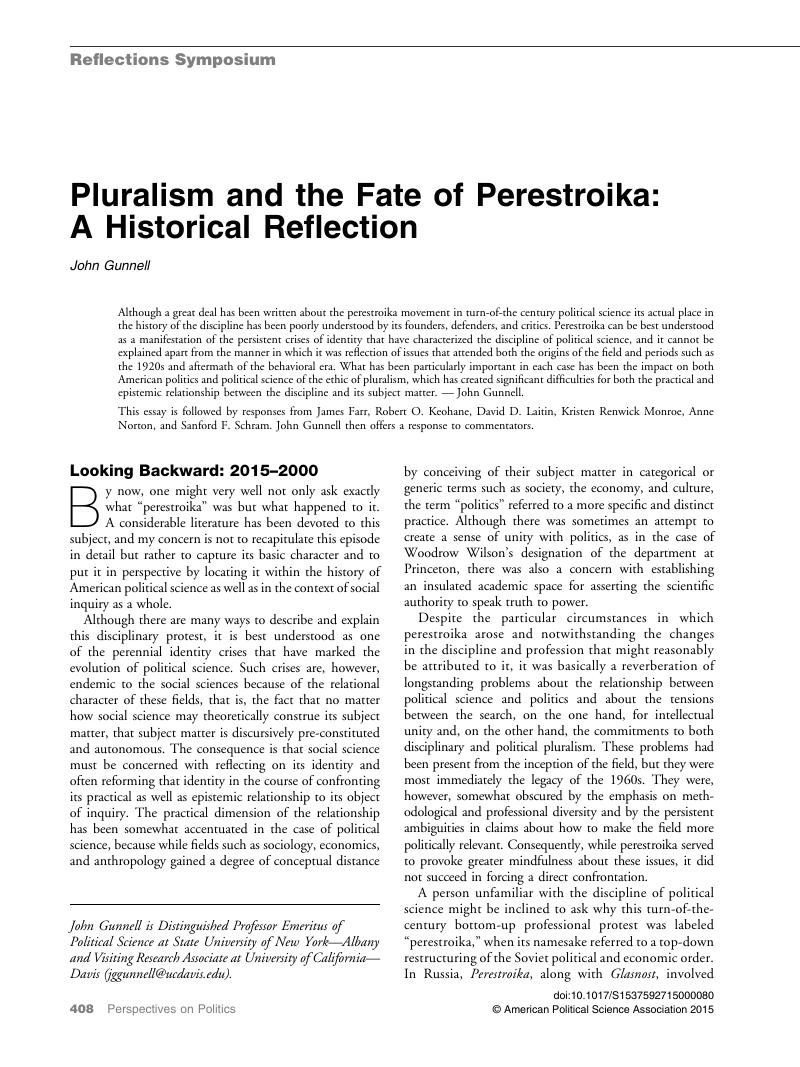No CrossRef data available.
Published online by Cambridge University Press: 18 June 2015

1 POP ran my article on gender inequality within academia as the lead article, after the editor of another journal refused even to send it out for review, claiming the topic of gender equality in the academy was “not political.”
2 Progress even for these minorities who did crack the power structure remains mixed. It took years of pressure for the APSA to regularly include women or blacks as president, and even now their numbers remain low. Hero remains the only Latino president.
3 Ironically, a perusal of the APSA presidents reveals a more open decision-making structure in the early days of the APSA, when it was not unusual for APSA presidents to be chosen from outside academia proper.